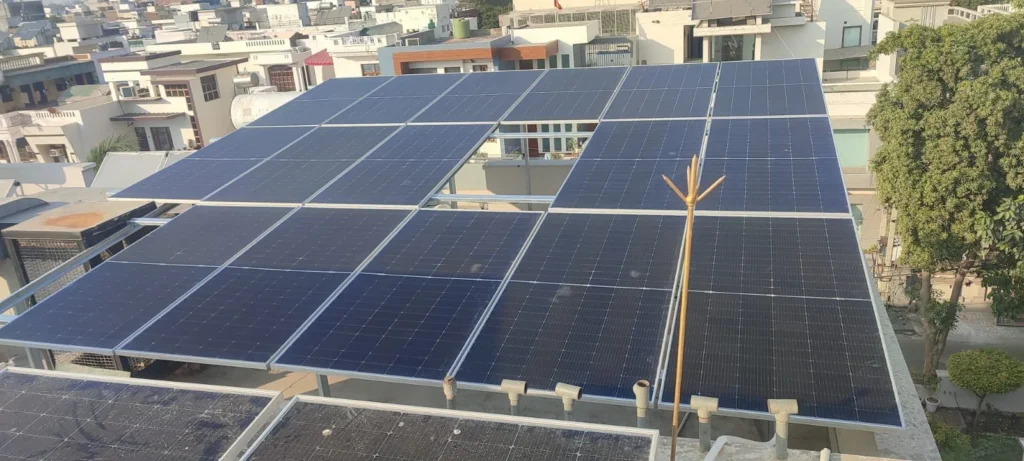Net metering is undergoing major changes in 2025 across both the United States and India, and these policy updates are impacting how solar users are credited for the electricity they send back to the grid. From reductions in export compensation rates to the rise of net billing and virtual metering models, staying informed about your state’s net metering rules is essential. In this article, we break down the latest state-wise changes and what they mean for your solar investment.

🇺🇸 United States: From Traditional Net Metering to Successor Tariffs
California
California rolled out its Net Billing Tariff (NEM 3.0) as a successor to traditional net metering. Export credit rates are now based on hourly wholesale values (via the Avoided Cost Calculator), reducing export compensation by around 75% compared to the old retail credit model yellowlite.com+1SEIA+1EcoFlow UK+1Solar Power World+1.
Impact: If you’re installing solar now, export revenue is reduced unless paired with battery storage to maximize self‑consumption and minimize exports.
Illinois
Starting January 1, 2025, Illinois will eliminate delivery credits: solar customers will only receive credits for energy supply—not for grid delivery charges Eagle Point Solar. Existing agreements will be grandfathered in if systems are installed before this deadline.
Impact: Delaying solar installation may cost you tens of percent in bill offsets. Act before 2025 for full net metering.
Nevada, Idaho, Maryland, Texas & Others
Several states—including Nevada, Idaho, Maryland, Texas, and Virginia—are shifting toward successor tariffs, virtual net metering, and demand‑charge models EDGE EnergyLinkedIn+1pv magazine International+1.
Impact: Reduced export rates and more complex billing may reduce returns. Battery storage becomes a practical necessity to preserve economic viability.
Virginia
Regulators in Virginia (Dominion & Appalachian Power) have proposed changes that could wipe out retail‑rate credits on new installations for 2025 onward. However, if your system is operational before the final SCC ruling, you’re likely grandfathered under the older, more favorable net metering rules EDGE Energy+1Eagle Point Solar+1.
Impact: If Virginia is your state, install early to lock in retail‑rate compensation.
National Trends
According to the NCCETC’s Q1 2025 report, 47 states + D.C. and Puerto Rico enacted major solar policy actions in early 2025, with 55 net metering policy actions alone—signaling a sweeping national trend away from traditional net metering toward alternative billing structures ilsr.org+2nccleantech.ncsu.edu+2pv magazine International+2.
🇮🇳 India: Emerging Group & Virtual Net Metering Models
Kerala
The Kerala Electricity Regulatory Commission’s draft Renewable Energy and Net Metering Regulations, 2025 propose net metering for 1–3 kW (up to 5 kW if backed by battery), net billing up to 500 kW, and gross metering for systems up to 3 MW energetica-india.net. A levy of ₹1/unit for generation above 3 kW may apply.
Impact: Size and technology matter. Pairing solar with storage could permit higher capacity under net metering.
Maharashtra
MERC issued a June 2025 order directing MSEDCL to enable net metering approvals up to 5 MW, resolving previous platform limitations that stalled large-scale solar deployments timesofindia.indiatimes.com+1timesofindia.indiatimes.com+1novergysolar.com+1timesofindia.indiatimes.com+1.
Impact: Businesses and institutional users can now scale large rooftop systems with net‑metering support—accelerating project returns.
Karnataka
From July 1, 2025, Karnataka permits solar installation on walls and elevated structures under its revamped Distributed Solar PV (DSPV) program, replacing SRTPV. It supports Virtual Net Metering (VNM) and Group Net Metering (GNM)—with attractive tariffs (~₹3.86/unit up to 10 kW; ₹3.80 above; subsidies available) valid for 25 years timesofindia.indiatimes.com.
Impact: Apartment complexes and group‑based installations now benefit from shared solar credits, making solar feasible even without traditional rooftop access.
Goa
The state amended its net metering regulations to cap eligible installations at 500 kWp, regardless of sanctioned load—impacting industrial and HT users timesofindia.indiatimes.com.
Impact: Large consumers must redesign projects or seek alternate export/settlement arrangements.
Delhi
As of May 1, 2025, Delhi’s DERC simplified billing by removing time‑block distinctions (off‑peak vs peak), making net metering credits easier to calculate for prosumers solarquarter.com.
Impact: Bill credits are straightforward to estimate; planning is simpler for residential solar consumers.
✅ What This Means for You
- Act before policy deadlines if your state is phasing out traditional retail‑rate net metering (e.g. Illinois, Virginia).
- Consider pairing solar with battery storage to optimize self‑consumption under successor tariffs (California, many U.S. states).
- Explore group and virtual net metering if rooftop access is limited (Karnataka, India).
- Stay within capacity limits—many states are enforcing sub‑500 kW caps or changing how capacity is counted.
🔍 Quick Summary Table
| Region / State | Policy Change | What You Should Do |
|---|---|---|
| California | NEM 3.0: wholesale‑rate export credits | Add battery storage; reduce exports |
| Illinois | Delivery credit dropped Jan 1, 2025 | Install before 2025 cutoff |
| Virginia | Retail credits may end for new installs | Install early to be grandfathered |
| Nevada, Texas, others | Successor tariffs or demand charges | Plan solar + storage; evaluate contract options |
| Karnataka (India) | Group/VNM metering with new tariffs valid 25 yrs | Consider community arrays or society models |
| Kerala | Tiered net/gross billing options; levy proposals | Use net+storage for >3 kW; balance system size |
| Maharashtra (Goa) | 5 MW net‑metering cap | Fit into capacity or seek alternatives |
| Delhi | Time‑block billing simplified | Easier estimate of returns; simpler bill credits |
Conclusion
Net metering remains a powerful tool to maximize your solar investment—but wide policy changes in 2025 mean the rules differ sharply by state. Whether you’re in the U.S. or India, understanding your state’s new metering model is crucial. Installing early, pairing with battery storage, or joining group/virtual metering programs could help you preserve value. Choose wisely—and make the most of solar in your state today.
📞 Contact Ramsun Solar Design
📧 Email: info@ramsunsolardesign.com
🌐 Website: www.ramsunsolardesign.com
